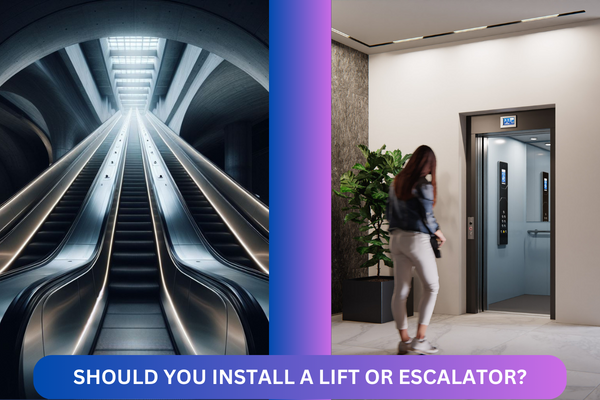
If your organization spans multiple floors, choosing between
a lift or an escalator for accessibility considerations is crucial, whether for
a retail or office space. Each option presents its advantages, prompting the
question: which one is the better fit for your needs?
Installation: Escalators and traditional lifts
require considerable space and entail high installation costs. However, modern
platform lifts offer versatility. Their modular structure allows flexible
placement within a building, quick installation in about a week, and the option
to relocate without extensive structural changes.
Efficiency: Both lifts and escalators
efficiently move people between floors. Yet, an escalator's constant operation
enables higher passenger capacity, making it preferable for areas with constant
foot traffic.
Cost: While escalators efficiently move a larger
number of people, their continuous operation incurs higher energy costs. In
contrast, lifts consume power only when in use, resulting in lower operational
expenses.
Accessibility: Lifts outshine escalators in
terms of accessibility, accommodating wheelchairs, strollers, and individuals
with mobility challenges. Escalators can be daunting or impractical for those
with movement difficulties.
Safety: Escalators have a history of accidents,
while lifts are generally considered safer. In case of failure, traditional
lifts may experience a 'dead drop,' whereas platform lifts stop safely,
offering a more reassuring travel experience.
In weighing the options between a lift and an escalator,
factors like space, installation ease, ongoing costs, user accessibility, and
safety considerations play pivotal roles in determining the most suitable
choice for your space and organizational needs.
Conclusion
The choice between a lift and an escalator for multi-floor
spaces demands careful consideration of several factors. While escalators offer
high passenger capacity and efficiency in constant foot traffic areas, they
require more significant space and incur higher operational costs. On the other
hand, lifts provide better accessibility and safety, particularly for
individuals with mobility challenges, albeit with lower operational expenses
and space requirements when not in use.
The decision ultimately hinges on your organization's
specific needs, space constraints, budget considerations, and the importance of
accessibility and safety. Understanding the distinct advantages and limitations
of each system can guide you in making a well-informed choice that best suits
your environment, ensuring seamless vertical mobility and convenience for
everyone within your space.

